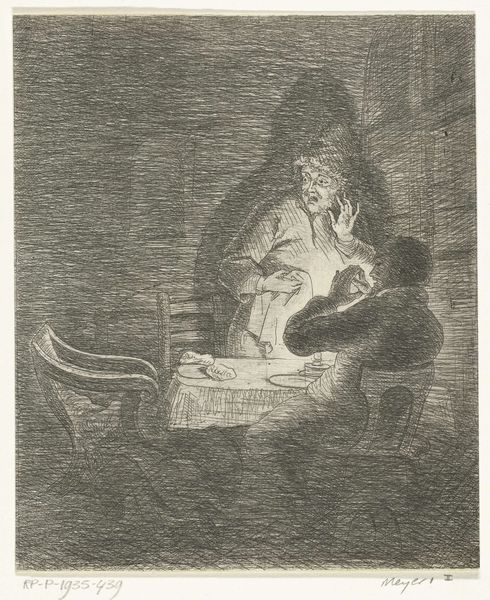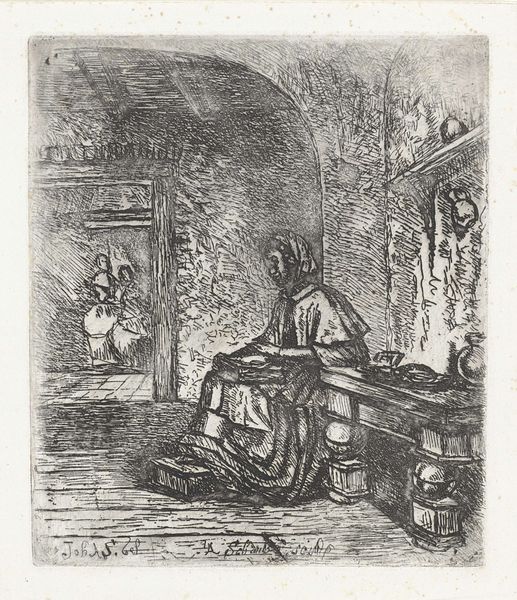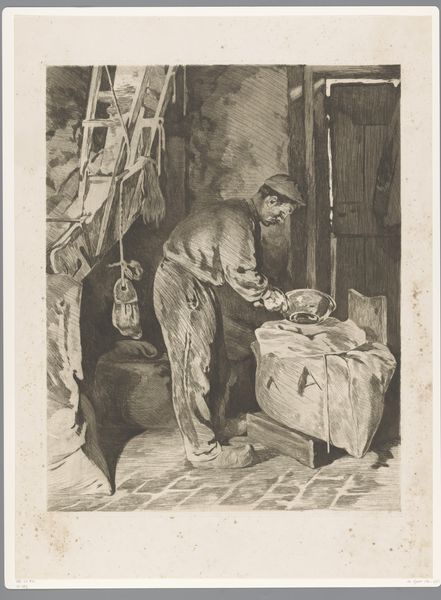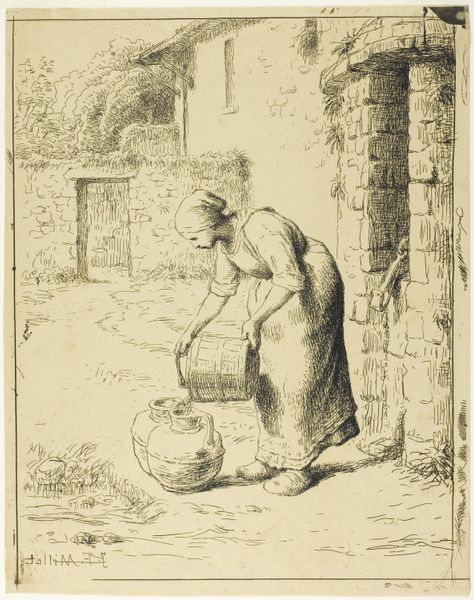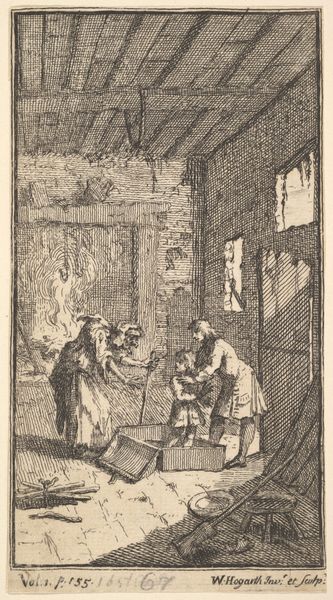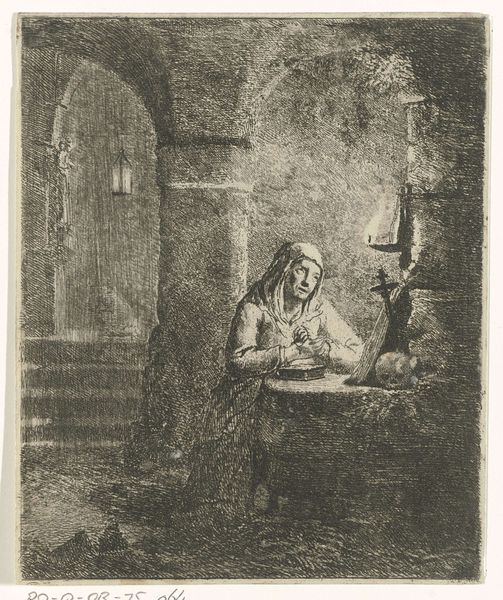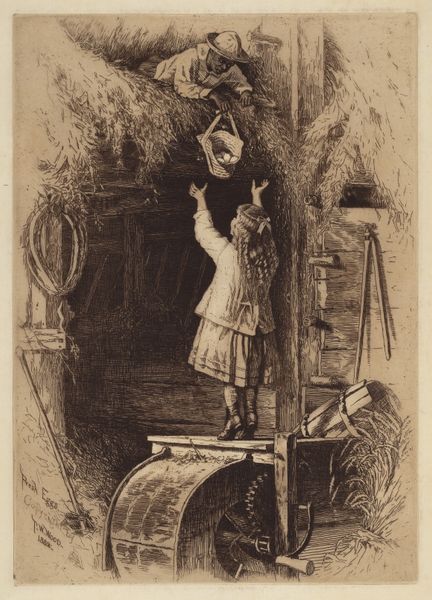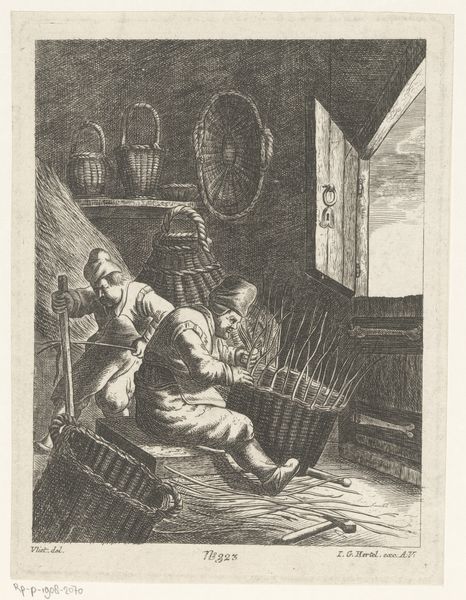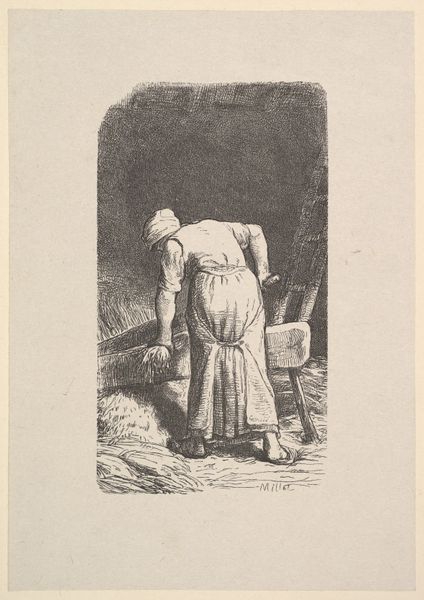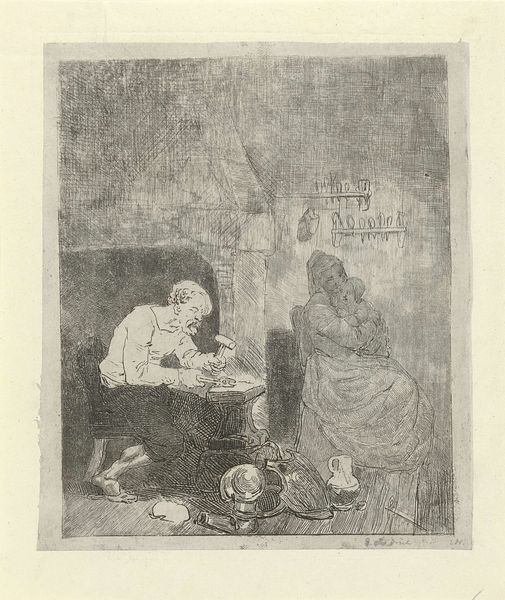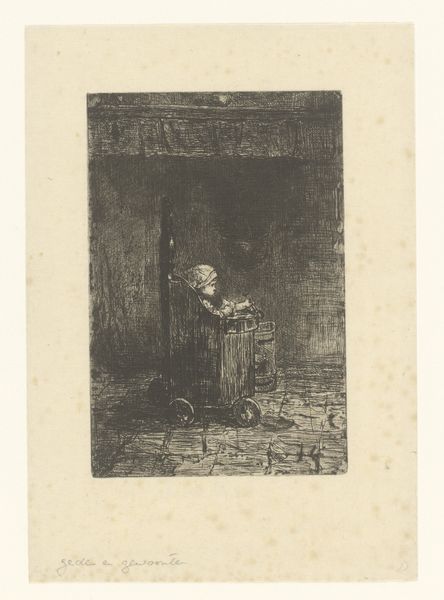
Masked Man using a Lantern to Collect Discarded Pamphlets by a Tombstone, from "Le Charivari" 1825 - 1835
0:00
0:00
drawing, print, etching, paper, ink
#
drawing
#
flâneur
# print
#
etching
#
caricature
#
paper
#
ink
#
romanticism
#
cityscape
#
history-painting
Dimensions: sheet: 11 7/16 x 8 7/8 in. (29 x 22.6 cm)
Copyright: Public Domain
Curator: What strikes me immediately about this image is the overwhelming darkness, only punctuated by the lantern light. There's something quite bleak about it. Editor: I agree, and the title certainly hints at why. This is an etching from "Le Charivari", dating to sometime between 1825 and 1835, by Benard, called "Masked Man using a Lantern to Collect Discarded Pamphlets by a Tombstone". Curator: So, the political commentary is evident. Discarded pamphlets, collected near a tombstone... it feels like a statement about the ephemerality of political discourse, perhaps? Editor: Exactly. The 'mask' becomes particularly interesting then. The figure’s identity is obscured. Are they collecting these discarded words to silence them further, or to preserve them? What power dynamics are at play? Curator: A fascinating question, particularly considering the socio-political climate of post-Revolutionary France. We have a masked figure engaging in a clandestine activity, surrounded by symbols of death and obsolescence. Was this print critiquing specific political factions or policies? Editor: That’s where the historical context is essential. "Le Charivari" was known for its satirical takes on Parisian life, targeting everyone from politicians to bourgeois society. Prints like this were a vital form of political expression. Curator: Looking closer at the cityscape details sketched above, that etching method almost feels like Romanticism's fascination with ruins and the melancholic passing of time, which ties into our masked man, like an allegory to the inevitable crumbling of societal progress, that now is trash near a tombstone. Editor: Indeed. The flâneur, typically a figure of observation and leisure in Parisian art, is here transformed into something darker. He isn't idly observing, he's actively engaging with—or scavenging through—the detritus of political life. It complicates that notion of the detached observer, and maybe, by doing this, unmask some realities about how art participates into societal issues. Curator: So, while I initially perceived the scene as solely depressing, the figure's agency adds layers of ambiguity and challenge—are these rejected ideas dangerous to him or to the reigning structures of the society where they exist? I think what strikes me the most is that, while time has passed, that struggle hasn't gone anywhere. Editor: I agree. This work really demonstrates how political and social contexts greatly impacts and informs an artwork's lasting power, resonating across decades with potent questions around power, history, and representation.
Comments
No comments
Be the first to comment and join the conversation on the ultimate creative platform.
